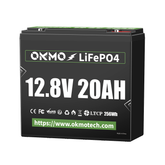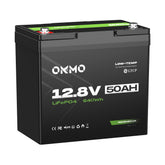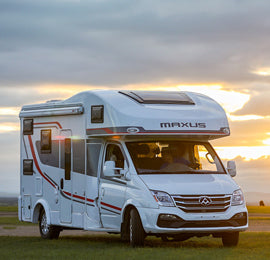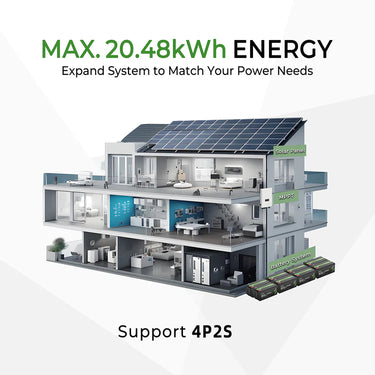Batteries in Series vs Parallel: Which is Better for Your Power Needs?

When upgrading an RV, building a solar system, or setting up a home backup power solution, over 67% of DIY users struggle with choosing between series and parallel connections. This guide breaks down the decision-making process through real-world scenarios, a 4-step framework, and safety protocols to help you make the right choice.
I. Voltage vs Capacity: The Core Tradeoff
Understanding the fundamental differences between these two connection methods is critical:
| Parameter | Series | Parallel |
|---|---|---|
| Total Voltage | Single Voltage × Count | Matches Single Voltage |
| Total Capacity | Matches Single Capacity | Single Capacity × Count |
| Best For | High-voltage Devices | Extended Runtime |
| Key Risks | Voltage Imbalance | Current Backflow |
▶ Real-World Examples
-
Solar Water Pump: 3×12V 100Ah batteries in series = 36V system (powers 800W pump requiring ≥30V input).
-
Home Backup Power: 4×12V 200Ah batteries in parallel = 12V system (runs fridge + lights for 48 hours).
II. The 4-Step Decision Framework
Step 1. Measure Device Voltage Requirements
Use a multimeter to check:
-
Operating voltage range (e.g., "18-24V DC" on power tools).
-
Peak startup current (see device label or manual).
⚠️ Critical Error Alert: Connecting a 48V battery to a 36V inverter may cause $200+ in damage.
Step 2. Calculate Daily Energy Demand
Formula:
Total Watt-Hours = Device Power (W) × Hours Used × 1.2 (Safety Margin)
Example:
-
RV AC: 1500W × 4h × 1.2 = 7,200Wh
-
For a 12V system: 7,200Wh ÷ 12V = 600Ah → Use 3×200Ah batteries in parallel.
Step 3. Choose Connection Type
Guidelines:
-
Series Priority: Required voltage > single battery voltage (e.g., e-bikes needing 48V).
-
Parallel Mandatory: Fixed-voltage devices needing longer runtime (e.g., marine electronics).
-
Hybrid Setup: Combine both for voltage + capacity boost (e.g., off-grid solar systems).
Step 4. Implement Safety Protocols
-
Match Batteries: Use identical brand/batch/cycle-count batteries (production date ≤3 months apart).
-
Monitor Heat: Disconnect if connection points exceed 10°C above ambient.
-
Torque Control: Tighten terminals to 12-15N·m (over-tightening strips threads).

III. Three Practical Scenarios
Scenario 1: RV Power System Upgrade
Challenge: Power 12V appliances + 120V AC simultaneously.
Solution:
-
Pair two 12V 200Ah batteries in series → 24V groups.
-
Parallel two groups → 24V 400Ah system.
-
Use a 3000W inverter for 120V output.
Advantage: Reduces cable costs by 40% vs 12V parallel systems.
Scenario 2: Home Solar Storage
Common Mistake: Directly connecting 36V solar panels to 12V batteries (causes 63% energy loss).
Pro Solution:
-
Series 3×12V batteries to match 36V panel voltage.
-
Add MPPT controller (97% efficiency).
-
Parallel a second battery bank for nighttime backup.
Scenario 3: DIY Tool Battery Pack
Custom Lithium Pack Tips:
-
Use 10×3.6V 21700 cells.
-
5-series 2-parallel (5S2P) → 18V 8Ah.
-
Install thermal fuses for overcurrent protection.
IV. Safety Hall of Fame & Shame
✅ Recommended Gear:
-
Klein Tools MM600 Multimeter (±0.5% accuracy).
-
NOCO GC018 Terminal Cleaner.
-
Blue Sea Systems 300A Fuse Block.
⛔ Forbidden Moves:
-
Mixing battery chemistries (lead-acid + lithium voltage curves differ by 23%).
-
Skipping balance wires (parallel voltage gaps >0.5V cause 35% capacity loss).
-
Ignoring temperature (charging lithium below 0°C permanently reduces 40% capacity).

V. Pro Optimization Tips
-
Dynamic Reconfiguration:
Use smart relays to switch between parallel (charging) and series (discharging) modes. -
Hybrid Systems:
Combine lead-acid and lithium via DC-DC converters (42% cheaper than all-lithium). -
Health Monitoring:
Test internal resistance monthly with YR1035+ meter. Replace cells with >15% variance.
Final Decision Flowchart:
Device Voltage > Battery Voltage? → Series → No → Need Longer Runtime? → Parallel → Both? → Hybrid
Remember: 80% of battery failures stem from improper connections. Follow this guide and use certified components to build a safe, customized power system.









